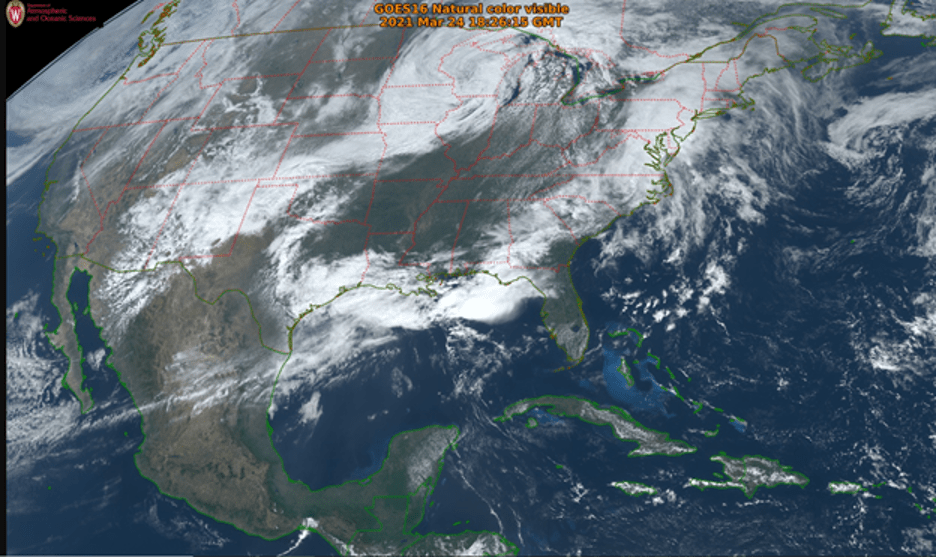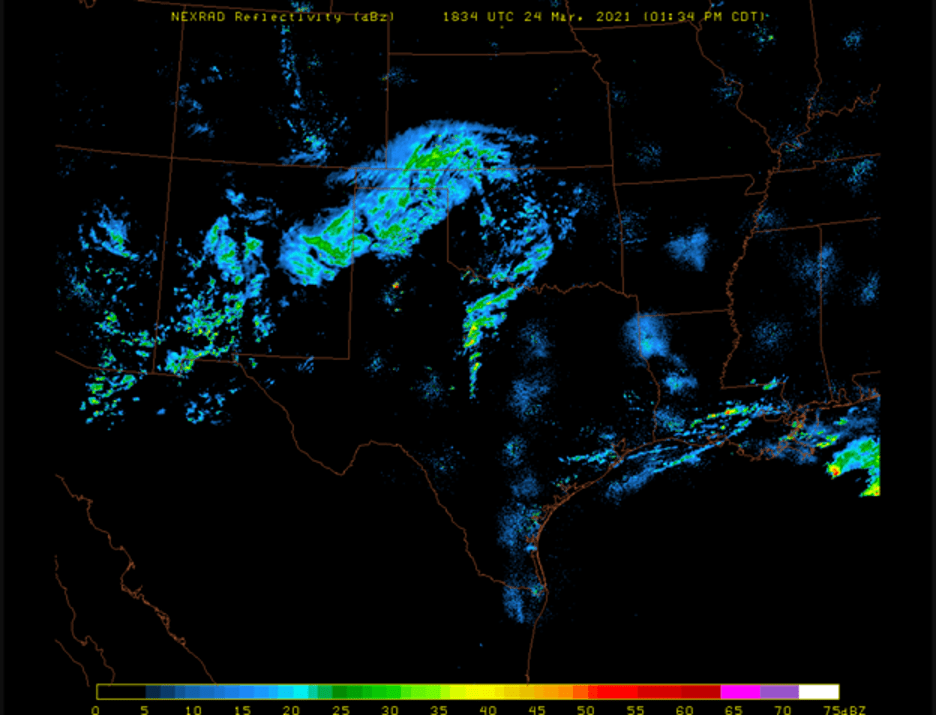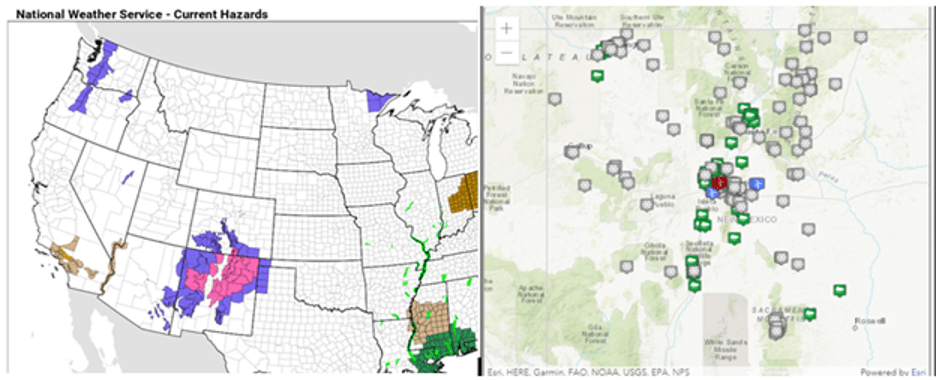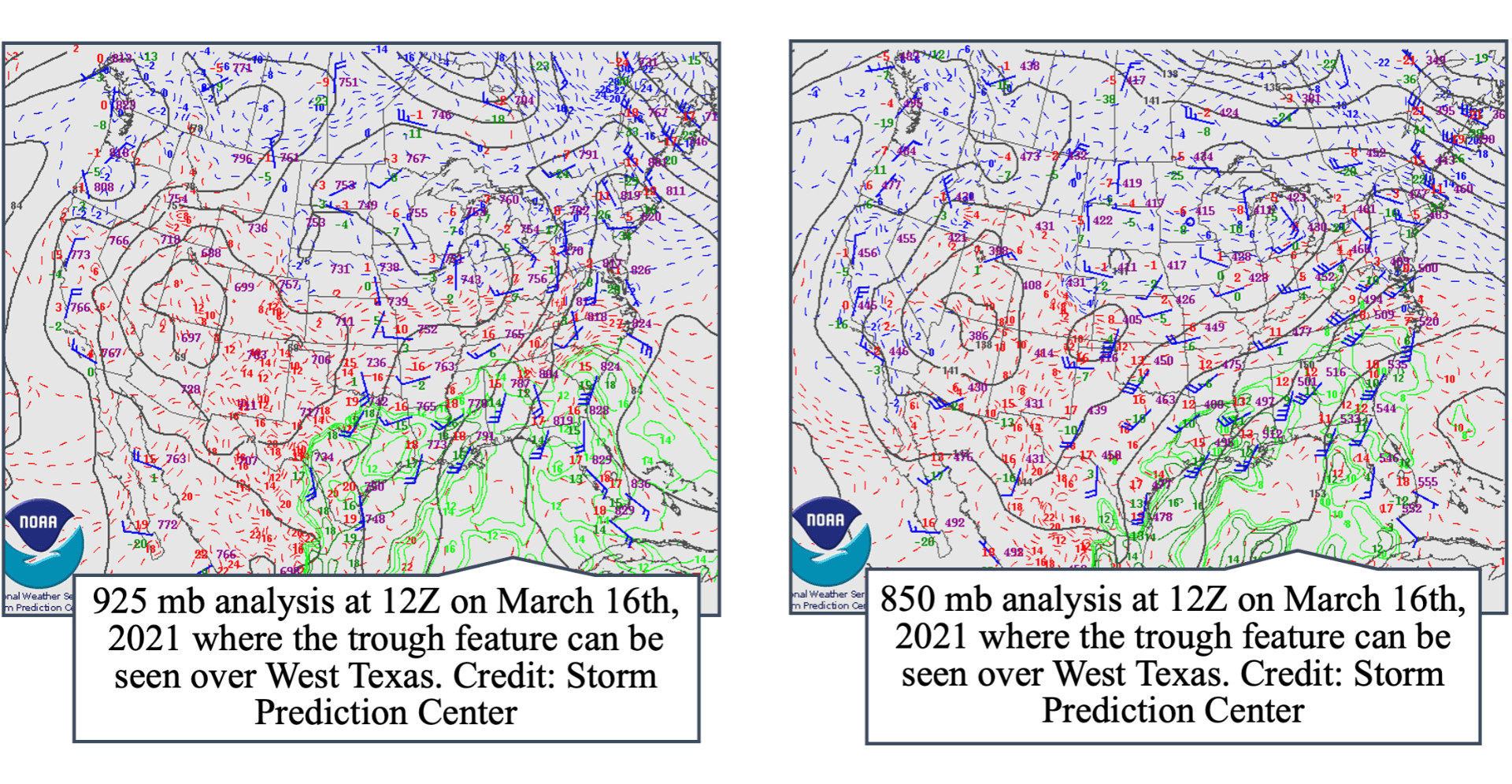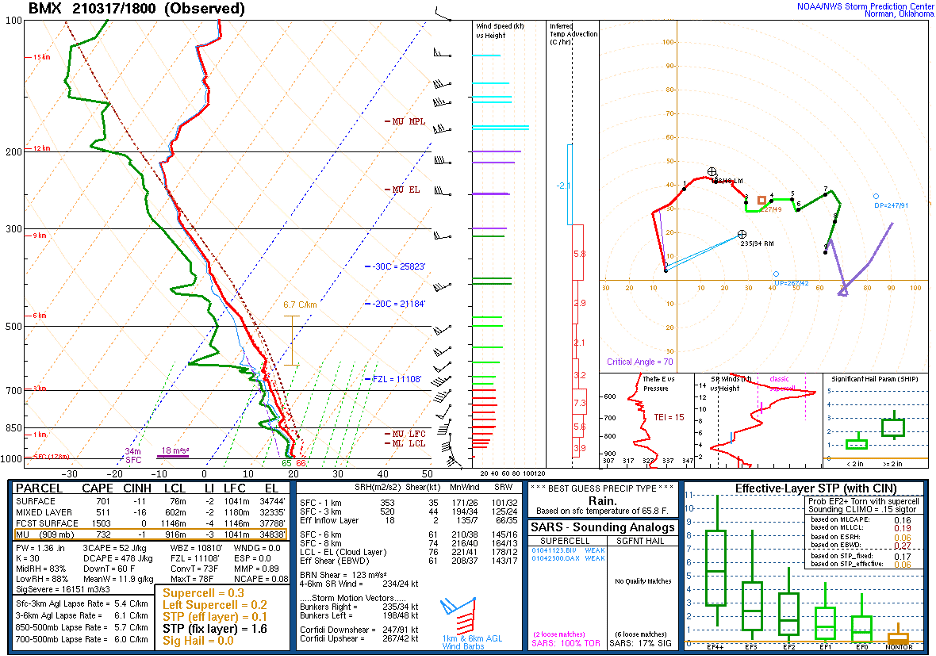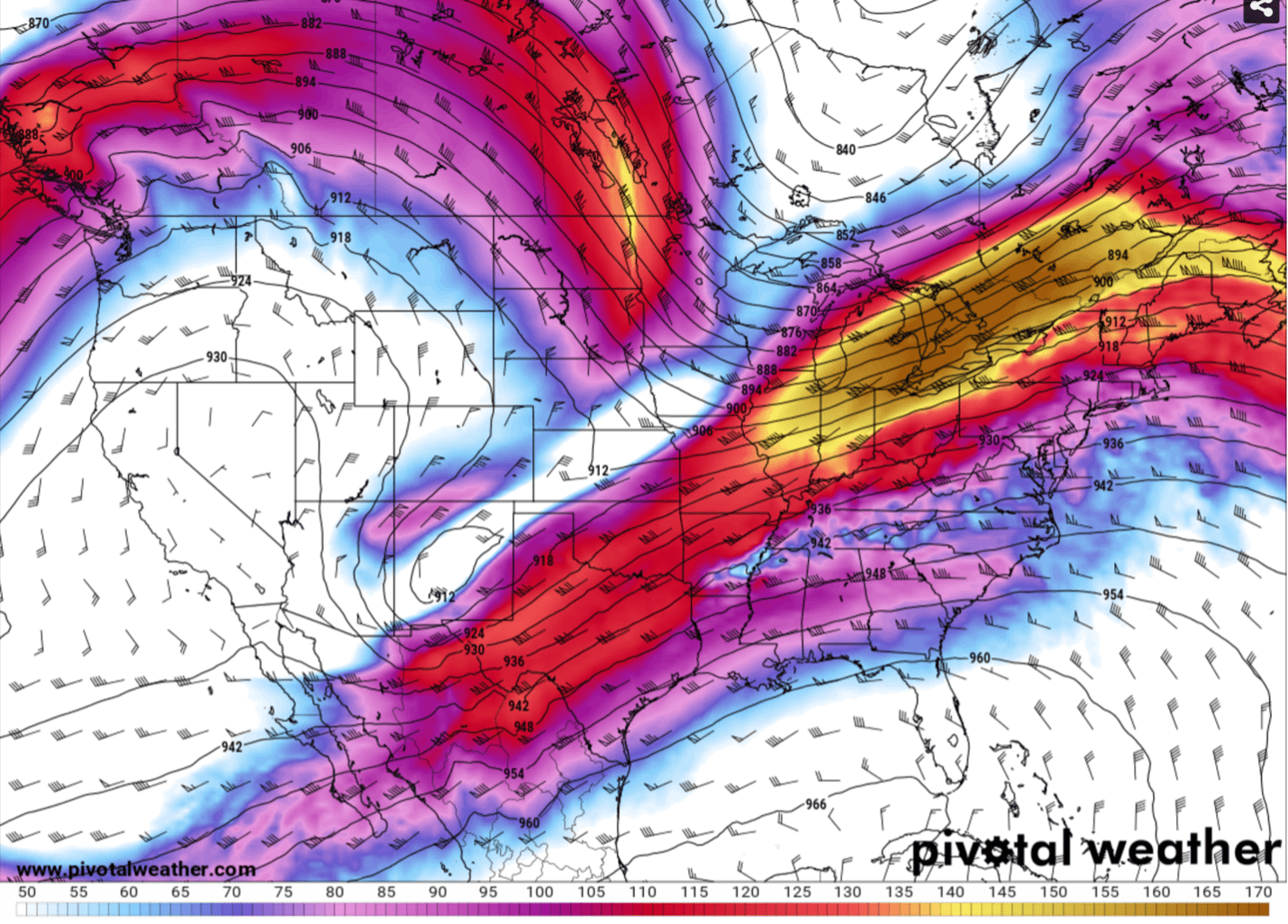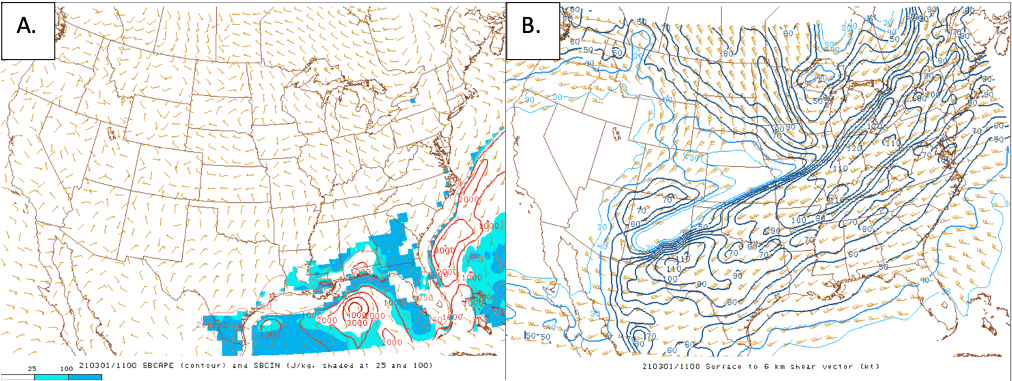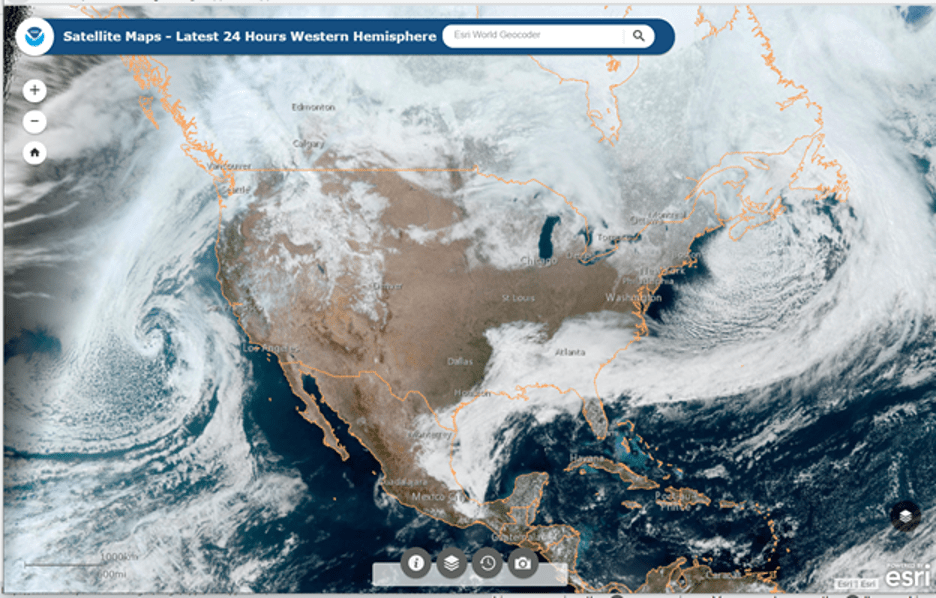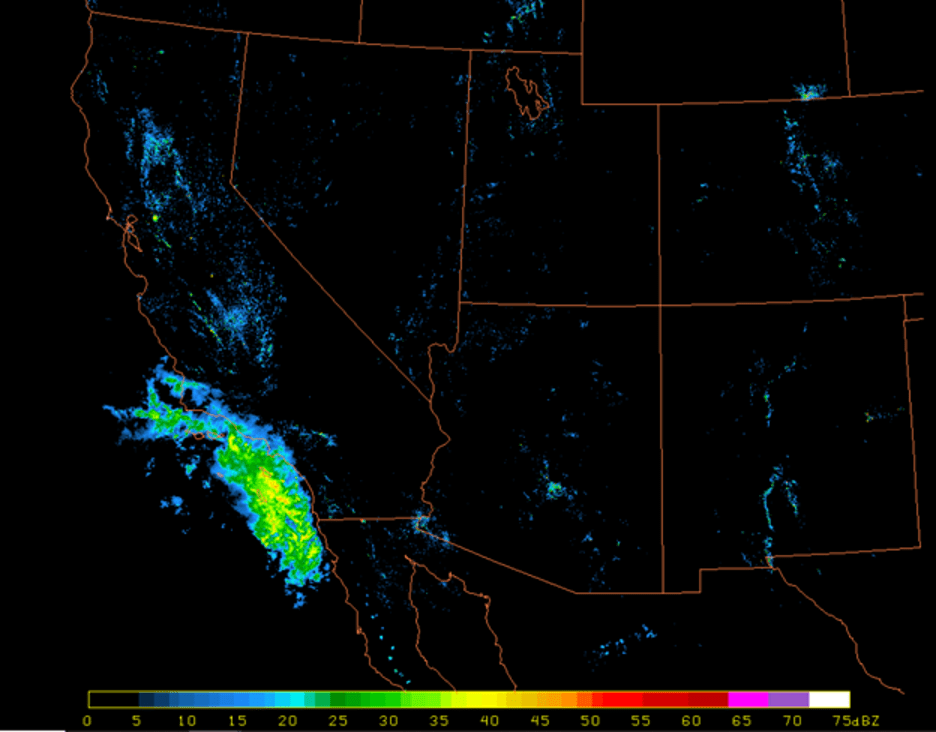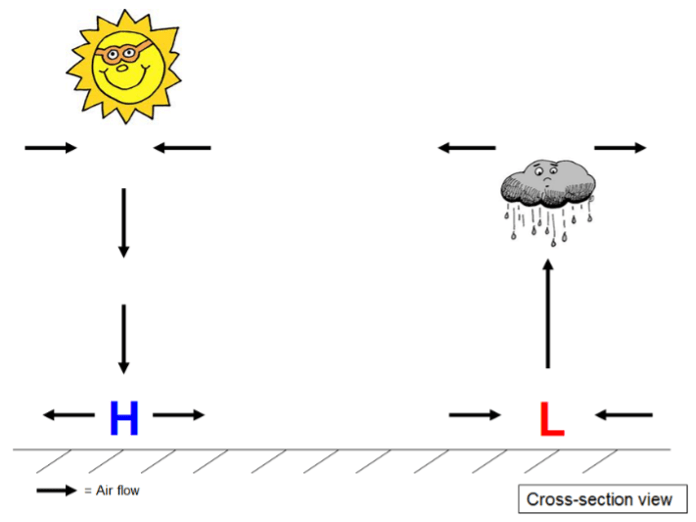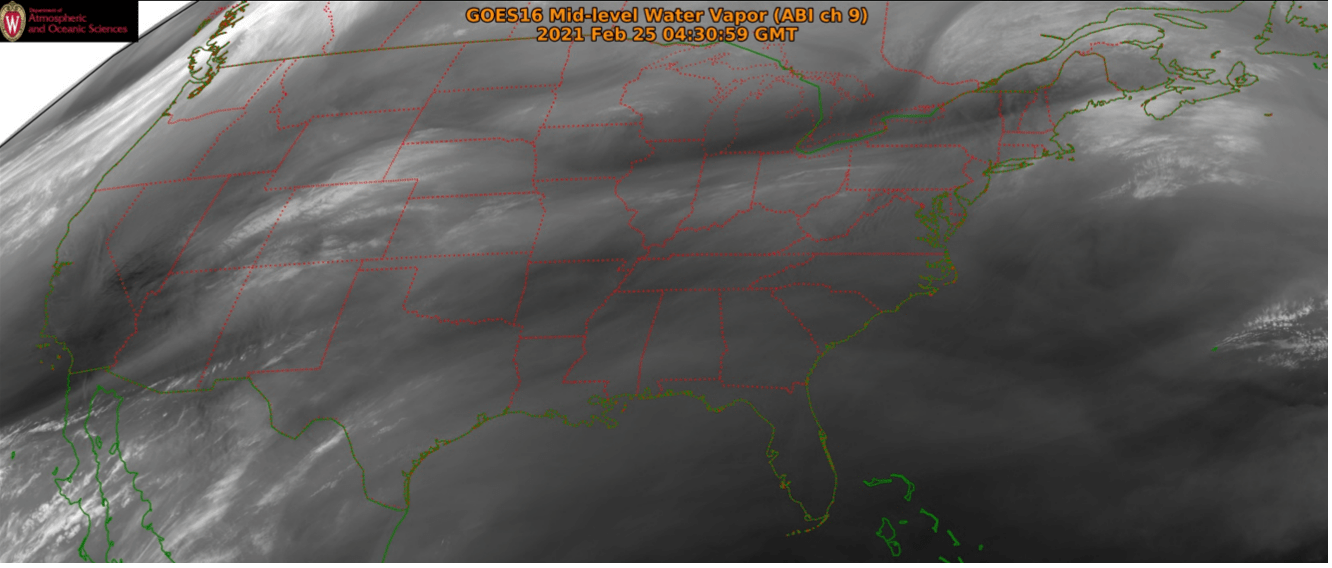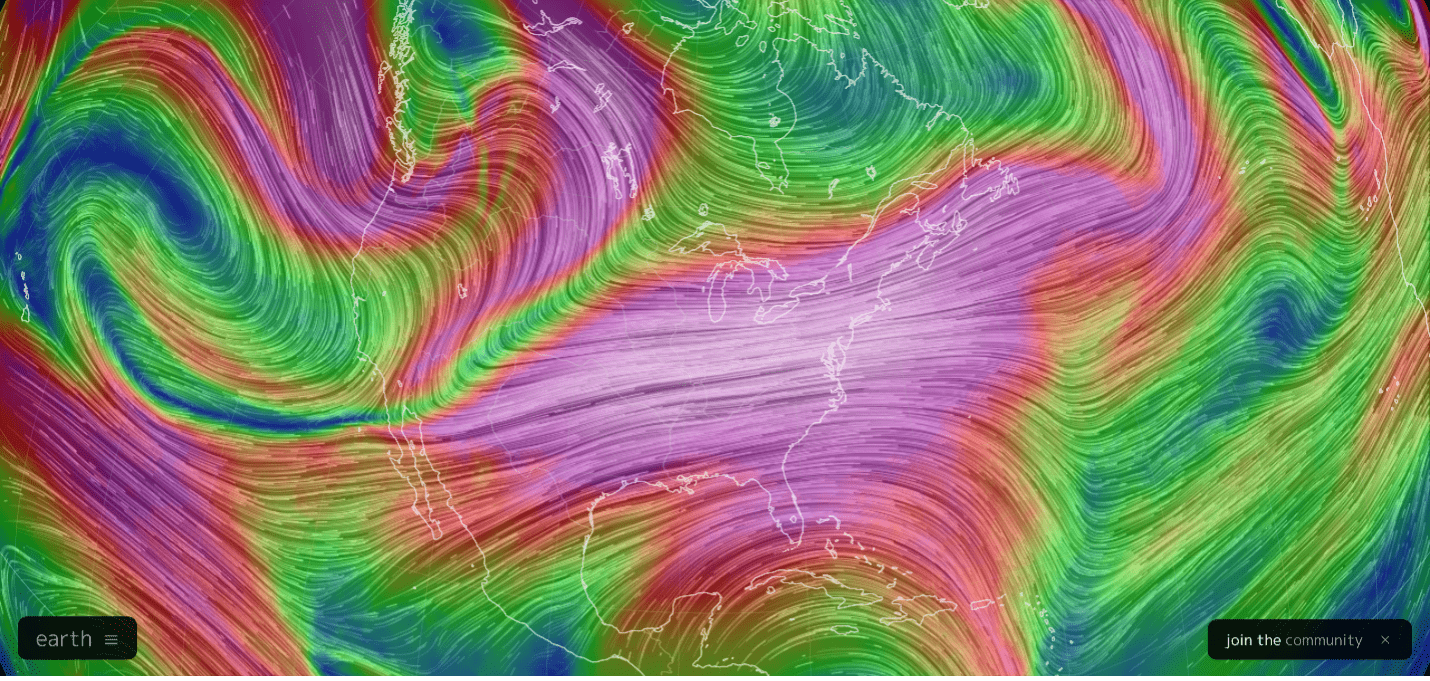Wednesday March 31st brough another chance for severe weather across much of the Southeastern United States. While this week did not bring a 3rd consecutive SPC issued high risk area, the SPC did issue a slight risk spanning from southern Louisiana and Mississippi to North Carolina (Figure 1). The main reason for this convective activity was due to a cold front propagating eastward. This front was associated with a low-pressure system centered over the Mid-Atlantic. The convection associated with the front can easily be seen in the visible satellite imagery (Figure 2). White clouds associated with convective activity can be seen extending from Louisiana northward along the East coast, into Canada. The visible imagery does not clearly depict a low-pressure system with a classic counterclockwise flow, and the reason for this is due to a surface cyclone in Southeastern Canada with a cold front extending southward into the US. The interaction of convection with this system and the Mid-Atlantic system makes for a messier visible image.
 Figure 1: SPC convective Day 1 outlook for the United States. This outlook was for 31 March 2021 13Z to 01 April 2021 13Z. Fill pattern displays outlook type. Image courtesy of the NOAA/NWS Storm Prediction Center.
Figure 1: SPC convective Day 1 outlook for the United States. This outlook was for 31 March 2021 13Z to 01 April 2021 13Z. Fill pattern displays outlook type. Image courtesy of the NOAA/NWS Storm Prediction Center.
 Figure 2: This is a visible satellite image from GOES-16 at 18Z 31 March 2021. Image courtesy of University of Wisconsin-Madison.
Figure 2: This is a visible satellite image from GOES-16 at 18Z 31 March 2021. Image courtesy of University of Wisconsin-Madison.
The reason the Southeastern US had a slight risk for severe weather was due to a variety of synoptic and mesoscale factors. Water vapor satellite imagery can provide more insight about the position of the jet stream and associated jet streaks. On water vapor imagery, the jet stream can be identified by looking for contrasting bright and dark regions. Along this border is where the jet stream will be. Additionally, there are four indicators of jet streaks on water vapor imagery: 1) Strongest brightness temperature gradient, 2) Transverse banding, 3) Fastest region on animation, and 4) Intensifying ridging. Based on Figure 3A, transverse banding can be seen of the NE coast of the United States. Additionally, a strong brightness temperature gradient is in this region as well. As a result, a jet streak would be expected over the Great Lakes & NE United States into SE Canada. Looking at data from the SPC Mesoscale Analysis Archive from the same time as the water vapor image (1800 UTC), a jet steak is present in the exact region expected (Figure 3B). Much of the SE United States is in the region downstream of the trough, and this region is where mid-tropospheric upward vertical motions occur due to ageostrophic divergence aloft. Additionally, this region is in the right jet entrance region of the jet streak which is also associated with mid-tropospheric upward vertical motions (UVM). This UVM can be confirmed by the purple contours which indicate UVM on Figure 3B.
 Figure 3A (left) is a water vapor satellite image from GOES 16 at 18Z 31 March 2021. Figure 3B (right) is a 300 mb height (contours, black, mb), wind speed (fill pattern), and divergence (contours, purple) from 31 March 2021 at 18Z. Images courtesy of the University of Wisconsin-Madison and the SPC Mesoscale Analysis Archive.
Figure 3A (left) is a water vapor satellite image from GOES 16 at 18Z 31 March 2021. Figure 3B (right) is a 300 mb height (contours, black, mb), wind speed (fill pattern), and divergence (contours, purple) from 31 March 2021 at 18Z. Images courtesy of the University of Wisconsin-Madison and the SPC Mesoscale Analysis Archive.
In addition, the mesoscale environment was favorable for convective activity as well. The former water vapor image shows ample moisture over the Southeast, indicated by the white and gray coloring. CIN was present across much of GA and SC around 14Z but dissipated around 18Z. CAPE values ranged anywhere from 250 – 1000 J/kg over the region of interest around 18Z (Figure 4A). In addition, 0-6 km shear values ranged anywhere from 40-60 knots over the region at 18Z (Figure 4B). Supercell composite parameter values were not that impressive at 18Z as the predominant value was .5 (Figure 4C). The moderate CAPE values along with the mild to moderate shear environment were the primary mesoscale factors that led to multicellular thunderstorm development rather than intense severe supercells. This type of convective activity can be confirmed with radar reflectivity data from March 31st. The data shows the most intense convection and precipitation ahead of the front, with lighter precipitation lagging behind (Figure 5).
 Figure 4A (top left) is a plot of CIN (fill pattern, shaded at 25 and 100 J/kg) and CAPE (contours, red, J/kg) from 31 March 2021 at 18Z. Figure 4B (top right) is a plot of 0 -6 km wind shear (contours, blue, knots, every 10 knots) from 31 March 2021 at 18Z. Figure 4C (bottom) is a plot of Supercell Composite Parameter (contours, blue) from 31 March 2021 at 18Z.
Figure 4A (top left) is a plot of CIN (fill pattern, shaded at 25 and 100 J/kg) and CAPE (contours, red, J/kg) from 31 March 2021 at 18Z. Figure 4B (top right) is a plot of 0 -6 km wind shear (contours, blue, knots, every 10 knots) from 31 March 2021 at 18Z. Figure 4C (bottom) is a plot of Supercell Composite Parameter (contours, blue) from 31 March 2021 at 18Z.
 Figure 5 is radar reflectivity data from 31 March 2021 at 21Z. The fill pattern (dBz) represents precipitation and its intensity.
Figure 5 is radar reflectivity data from 31 March 2021 at 21Z. The fill pattern (dBz) represents precipitation and its intensity.
Overall, the Southeast United States was situated in a mild area of instability in regard to the synoptic and mesoscale environments. The jet streak present over the Northeast was strong but positioned just a bit too far from the SE to maximize UVM in the region. Had the shear environment been more intense, a severe weather outbreak with supercells could have occurred, but the mild shear coupled with moderate mild to moderate CAPE was not enough.






